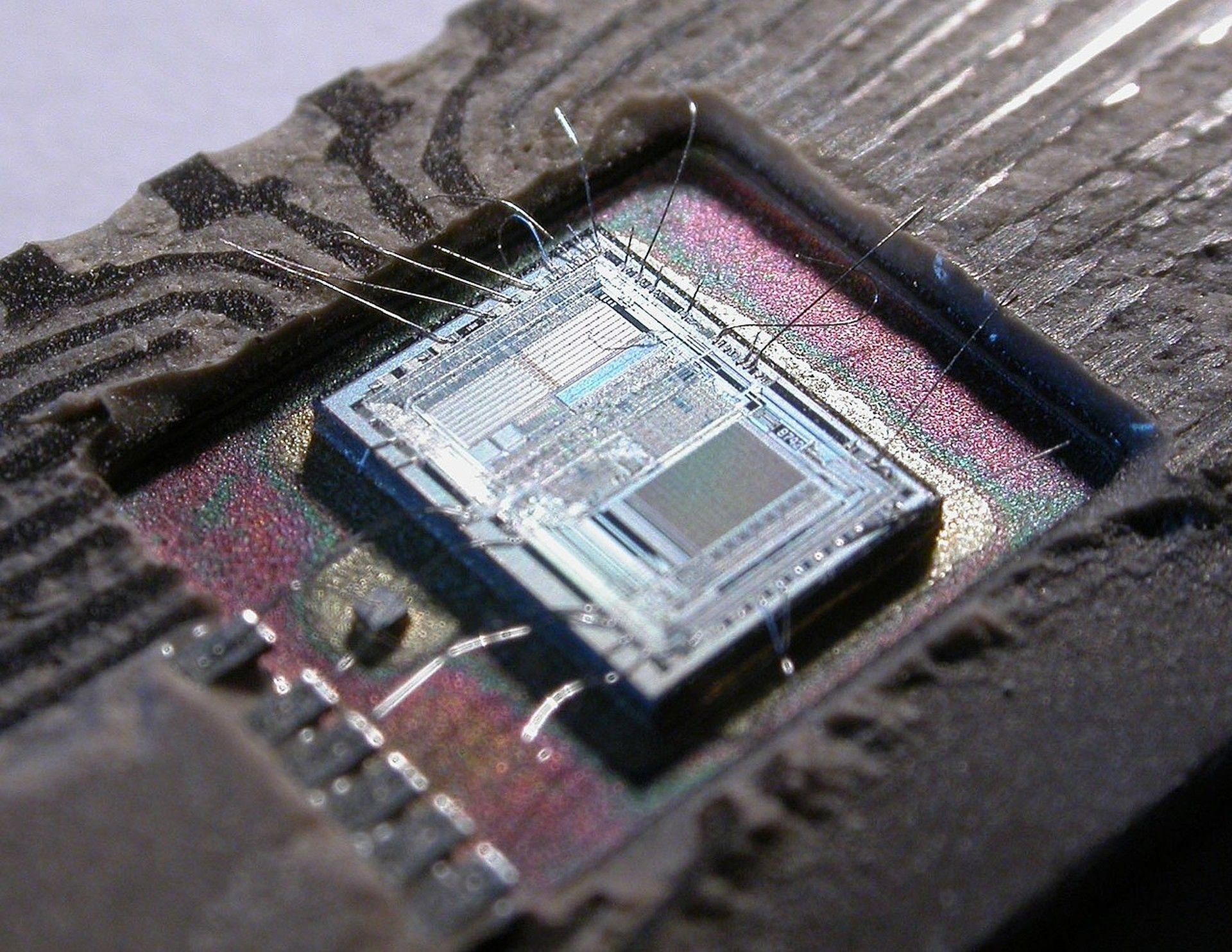In our increasingly connected world, where data is generated at an astonishing rate, edge processing has emerged as a transformative technology. Edge processing is a cutting-edge paradigm that brings data processing closer to the sources, enabling faster and more efficient analysis. But what exactly is edge processing, and how does it revolutionize the way we harness the power of data?
Simply put, edge processing refers to the practice of moving data processing and storage closer to where it is generated, rather than relying on centralized systems located far away. By placing computational power at the edge, edge processing reduces the distance data needs to travel, resulting in quicker response times and improved efficiency. This technology holds the potential to reshape industries and open up new possibilities for businesses across the globe.
Imagine a world where data is processed right where it is generated, at the edge of the network. This means that the massive volumes of data produced by our devices, sensors, and machines can be analyzed and acted upon in real-time, without the need to transmit it to distant data centers. It’s like having a supercharged brain at the edge, capable of making split-second decisions and unlocking insights that were previously out of reach.
Edge processing introduces a fascinating concept that challenges the traditional approach to data processing. By distributing computational power to the edge of the network, closer to the devices and sensors that collect the data, edge processing offers exciting possibilities. It promises reduced latency, enhanced security, improved bandwidth utilization, and a whole new level of flexibility for businesses and industries seeking to leverage the full potential of their data.

What is edge processing?
Edge processing is a computing paradigm that brings computation and data storage closer to the sources of data. This is expected to improve response times and save bandwidth. Edge computing is an architecture rather than a specific technology, and a topology- and location-sensitive form of distributed computing.
In the context of sensors, edge processing refers to the ability of sensors to perform some level of processing on the data they collect before sending it to a central location. This can be done for a variety of reasons, such as to reduce the amount of data that needs to be sent, to improve the performance of the sensor, or to enable real-time decision-making.
How does edge processing work?
Edge processing works by distributing computing and data storage resources closer to the sources of data. This can be done by deploying edge devices, such as gateways, routers, and smart sensors, at the edge of the network. Edge devices are typically equipped with more powerful processors and storage than traditional sensors, which allows them to perform more complex processing tasks.
When data is collected by a sensor, it is first sent to an edge device. The edge device then performs some level of processing on the data, such as filtering, aggregating, or analyzing. The processed data is then either stored on the edge device or sent to a central location for further processing.

Edge computing systems cannot work without these components
An edge computing system comprises several vital components that work together seamlessly to enable efficient data processing and analysis. These components include:
- Edge devices
- Edge software
- Network
- Cloud
Edge devices play a crucial role in an edge computing system. These physical devices are strategically positioned at the network’s edge, near the sources of data. They act as frontline processors, responsible for executing tasks related to data collection, analysis, and transmission. Examples of edge devices include sensors, gateways, and small–scale computing devices.
To effectively manage and control the operations of edge devices, edge software comes into play. Edge software refers to the specialized programs and applications that run on these devices. Its primary purpose is to facilitate data collection from sensors, carry out processing tasks at the edge, and subsequently transmit the processed data to a centralized location or other connected devices. Edge software essentially bridges the gap between the physical world and the digital realm.
The network forms the backbone of an edge computing system, linking the various edge devices together as well as connecting them to a central location. This network can be established through wired or wireless means, depending on the specific requirements and constraints of the system. It ensures seamless communication and data transfer between edge devices, enabling them to collaborate efficiently and share information.
A fundamental component of the overall edge computing infrastructure is the cloud. The cloud serves as a centralized location where data can be securely stored and processed. It provides the necessary computational resources and storage capacity to handle the vast amounts of data generated by edge devices. By utilizing the cloud, an edge computing system can leverage its scalability and flexibility to analyze data, extract valuable insights, and support decision-making processes.
Cloud vs edge computing
Cloud computing and edge computing are two different computing paradigms that have different strengths and weaknesses. Cloud computing is a centralized computing model where data and applications are stored and processed in remote data centers. Edge computing is a decentralized computing model where data and applications are stored and processed closer to the end users.
Here is a table that summarizes the key differences between cloud computing and edge computing:
| Feature | Cloud computing | Edge computing |
| Centralization | Stored and processed in remote data centers | Stored and processed closer to the end users |
| Latency | Latency can be high, especially for applications that require real-time processing | Latency can be low, as data and applications are stored and processed closer to the end users |
| Bandwidth | Bandwidth requirements can be high, as data needs to be transferred between the end users and the cloud | Bandwidth requirements can be lower, as data and applications are stored and processed closer to the end users |
| Security | Security can be a challenge, as data is stored in remote data centers | Security can be easier to manage, as data is stored and processed closer to the end users |
| Cost | Cost can be lower, as the cloud provider can share the cost of infrastructure across multiple users | Cost can be higher, as the end users need to purchase and maintain their own infrastructure |
Edge processing applications are limitless
The applications of edge processing are vast and diverse, extending to numerous domains. One prominent application is industrial automation, where edge processing plays a pivotal role in enhancing manufacturing processes. By collecting data from sensors deployed across the factory floor, edge devices can perform real-time control and monitoring. This empowers manufacturers to optimize efficiency, detect anomalies, and prevent equipment failures, ultimately leading to increased productivity and cost savings.
As for smart cities, edge processing is instrumental in harnessing the power of data to improve urban living conditions. By collecting data from various sensors dispersed throughout the city, edge devices can perform real-time analytics. This enables efficient traffic management, as the system can monitor traffic patterns and implement intelligent strategies to alleviate congestion. Furthermore, edge processing in smart cities facilitates energy efficiency by monitoring and optimizing the usage of utilities, while also enhancing public safety through real-time monitoring of public spaces.
10 edge computing innovators to keep an eye on in 2023
The healthcare industry greatly benefits from edge processing capabilities as well. By collecting data from medical devices and leveraging real-time analytics, healthcare providers can improve patient care and prevent medical errors. For instance, edge devices can continuously monitor patients’ vital signs, alerting medical professionals to any abnormalities or emergencies. This proactive approach ensures timely interventions and enhances patient outcomes.
Edge processing also finds application in the transportation sector. By collecting data from vehicles, such as GPS information, traffic patterns, and vehicle diagnostics, edge devices can perform real-time analytics. This empowers transportation authorities to enhance traffic safety measures, optimize routes, and reduce congestion on roadways. Furthermore, edge processing can facilitate the development of intelligent transportation systems that incorporate real-time data to support efficient and sustainable mobility solutions.
How to implement edge processing in 6 simple steps
To understand how edge computing will affect small businesses, it’s crucial to recognize the potential benefits it brings. By implementing edge computing, small businesses can leverage its capabilities to transform their operations, enhance efficiency, and gain a competitive edge in the market.
Step 1: Define your needs
To begin the implementation of edge computing in your application, the first crucial step is to define your specific edge computing requirements. This involves gaining a clear understanding of the data you need to collect, where it needs to be collected from, and how it should be processed.
By comprehending these aspects, you can effectively design your edge computing system to cater to your unique needs and objectives.

Step 2: Choose an MCU or MPU solution
Once you have defined your requirements, the next step is to choose the appropriate MCU (Microcontroller Unit) or MPU (Microprocessor Unit) solution for your edge devices. MCUs and MPUs are the types of processors commonly utilized in edge devices.
With a variety of options available, it is important to select the one that aligns with your specific needs and technical considerations.
Step 3: Design your core application stack
Designing your core application stack comes next in the implementation process. The core application stack refers to the software that runs on your edge devices, responsible for tasks such as data collection from sensors, edge processing, and transmission of data to a central location.
It is essential to design this application stack in a manner that meets your precise requirements, ensuring seamless functionality and efficient data processing.
Step 4: Implement the application logic in the stack
After designing the core application stack, the subsequent step involves implementing the application logic within the stack. This entails writing the necessary code that enables your edge devices to effectively collect data from sensors, perform edge processing operations, and transmit the processed data to a central location.
By implementing the application logic correctly, you ensure the proper functioning and execution of your edge computing system.
Step 5: Secure the system and monitor usage characteristics
To ensure the security and integrity of your edge computing system, it is crucial to focus on securing the system and monitoring its usage characteristics. This involves implementing robust security measures to protect edge devices from potential cyber threats or unauthorized access.
Additionally, monitoring the system’s usage characteristics allows you to assess its performance, detect any anomalies, and ensure that it operates as expected, delivering the desired outcomes.
Step 6: Monitor usage metrics to ensure optimal performance has been achieved
Lastly, it is important to monitor usage metrics to evaluate the system’s performance and achieve optimal efficiency. This includes monitoring factors such as system latency, bandwidth usage, and energy consumption.
By closely monitoring these metrics, you can identify areas for improvement, make necessary adjustments, and ensure that your edge computing system operates at its highest potential.

The bottom line is, edge computing is a game-changing technology that holds immense promise for businesses and industries worldwide. By bringing data processing closer to the edge, this innovative paradigm opens up a realm of possibilities, empowering organizations to harness the full potential of their data in real time. From faster response times to enhanced efficiency and improved security, edge computing offers a multitude of benefits that can revolutionize how we leverage information.
Throughout this article, we have explored the concept of edge computing, unraveling its potential applications in diverse sectors and shedding light on the exciting opportunities it presents. We have witnessed how edge computing can enable manufacturing processes to become more efficient, how it can transform transportation systems, and how it can revolutionize healthcare, among many other industries.
The era of edge computing is upon us, and it is a thrilling time to witness the convergence of cutting-edge technology and data-driven insights. As businesses embrace the power of edge computing, they gain the ability to make real-time, data-informed decisions, enabling them to stay ahead in today’s fast-paced digital landscape.
Featured image credit: Photo by Mike Kononov on Unsplash.





